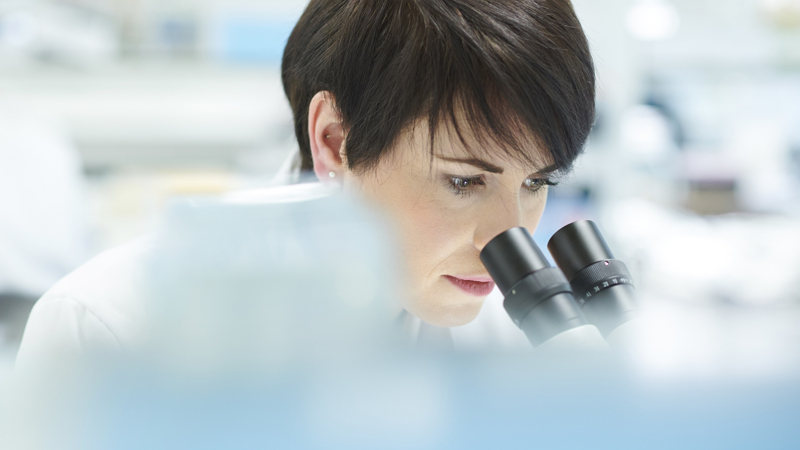JDRF Top Advances Over the Past Year

At JDRF, we are committed to funding the development of new therapies to keep people with type 1 diabetes (T1D) healthier, longer, until a cure is found. Over the past year, we saw some great advances in T1D research and advocacy. Here to tell you about it is Aaron Kowalski, Ph.D., chief mission officer at JDRF. (You can also read the top advances below the video.)
Results like these have delivered progress we can be proud of in 2018. Until the cure is found, JDRF will be funding the research and advocacy that makes it easier and less burdensome for all of the people with T1D and their families. Read more at jdrf.org.
Driving Progress Across the Pipeline
- JDRF is committed to accelerating drugs and devices that help people with T1D improve glucose control, achieving better outcomes with less burden. This year, there was an important step forward for a new drug to improve glucose control. Lexicon and its partner, Sanofi, submitted a new drug for approval in the United States and Europe for T1D. The drug is called Zynquista™ (sotagliflozin), and it is the first drug to block both SGLT-1 and SGLT-2, which are responsible for blood sugar absorption in the kidneys and intestine. JDRF was one of the first to support a clinical trial to see if it worked in T1D. In this and later clinical trials, sotagliflozin showed a significant reduction in HbA1c, and also improved other key health measures. If it is approved, it will be the first example of a novel oral drug approved for T1D, prior to seeking approval for type 2 diabetes.
- JDRF has made beta cell replacement a top priority, and is funding multiple scientific approaches. This year, a leading pharmaceutical company committed to moving an approach forward. Eli Lilly will collaborate with Sigilon Therapeutics to develop encapsulated cell therapies for T1D, using technology that began with JDRF funding. Encapsulation technologies can “shield” beta cells so that they are protected from immune attack. At JDRF, we catalyzed encapsulation research and attracted people into the field, among them were Daniel Anderson, Ph.D., and Robert Langer, Sc.D. Their research eventually led to the discovery of an encapsulation platform that led them to found Sigilon Therapeutics. The Lilly-Sigilon partnership, is an extraordinary step forward for the entire T1D community.
Innovation
- JDRF is committed to advancing artificial pancreas technology, which is why we undertook a new initiative, called the Open Protocol initiative, whereby an insulin pump, a CGM and an algorithm could “talk” to each other, regardless of whether they have the same manufacturer. Just imagine if you could mix and match components together into a safe and effective artificial pancreas system. It’s not that far away. The FDA has approved one CGM system—the Dexcom G6—in a new framework that enables companies to more easily combine components into interoperable systems. This new paradigm could dramatically speed innovation and make the regulatory process far more efficient.
Artificial pancreas systems monitor glucose levels and automatically provide the right amount of insulin—a revolutionary advancement that dramatically reduces T1D-related complications and risks.
- JDRF has not been able to analyze clinical studies of T1D in a way that can tell us why some children who are at risk get T1D and others do not. Until now. We are excited to be collaborating with IBM to develop and apply world-class computing power to analyze years of global T1D research data and identify factors leading to the onset of T1D in children. By developing a better understanding of risk factors and causes of T1D, we hope to eventually find a way to prevent the disease entirely.
- JDRF wants to make all aspects of living with T1D as safe, easy and healthy as possible. That is especially true for pregnancy. JDRF funded the CONCEPTT trial, which stands for Continuous Glucose Monitoring in Women with Type 1 Diabetes in Pregnancy Trial. The clinical trial showed that using a CGM during and prior to pregnancy improves the health outcomes for both mothers and babies. These findings have the potential to an improved standard of care for expecting mothers with T1D around the world.
JDRF Advocacy
- In February, Congress approved legislation for a two-year extension of the Special Diabetes Program, which would give $300 million for T1D research through the National Institutes of Health. This renewed funding will allow researchers to build on past successes and continue promising trials that may lead to better treatments, prevention measures and a cure for T1D. Since 1997, JDRF’s grassroots advocacy efforts been successful in securing and renewing nearly $2.8 billion through the Special Diabetes Program.
- At JDRF, we know that the artificial pancreas technology is a game-changer. But these systems’ out-of-pocket costs can be out of reach when not covered by insurance. In a major milestone, America’s 25 largest health insurance companies now cover the first hybrid closed-loop AP system, the Medtronic 670G. This came after Anthem—America’s second-largest health insurance company—decided to cover the AP systems in November. Anthem changed its policy after engaging with JDRF, hearing from the T1D community and closely evaluating additional scientific literature that shows this technology is helping people with T1D be healthier. Through JDRF’s Coverage2Control campaign, JDRF is advocating for coverage, choice and affordability of T1D therapies.
Stay tuned to the JDRF blog and Twitter (@JDRF and @JDRFResearch) for more advances over the next year!